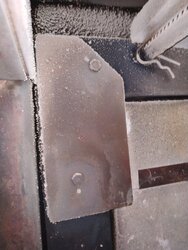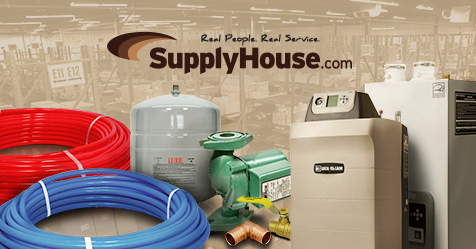Hi all!
Last summer, I had a Continental CHMF200 wood furnace installed. Continental is Napoleon's sister brand - this furnace is identical to the Napoleon HMF200 with the exception that some things are optional on the Continental instead of standard as on the Napoleon.
Anyways, last year, we went through a ton of wood, and I suspected I had a problem with the stove. My burn times were poor (2-3 hours), we went through a ton of wood, I had high chimney temps etc. Given the height of the chimney (probably 30-35' from the furnace vent to the top) and our high winds, I figured it was a draft issue.
This year, I installed a manometer (a Dwyer Mk II Model 25) to monitor my draft, and I definitely have a signifigant overdraft.
The manual for the stone calls for an operating draft between -0.04" and -0.06", with lots of warnings that draft should never exceed -0.06".
Now, I've been measuring the draft for the past week since I installed the manometer, and I'm seeing the following:
0C (32F) - still air - draft between -0.08 and -0.10. Flue temp ~400F
0C (32F) - slight breeze - draft between -0.10 and -0.13. Flue temp ~450F
-9C (15.8F) - still air - draft between -0.12 and -0.15. Flue temp ~525F (right now)
It gets a whole lot colder and a whole lot windier here as we get into winter proper.
Now, the manual does allow for a barometric damper, but with a list of warning including rapid creosote buildup and uncontrollable chimney fires
So, at this point, I'm looking for some advice. Should I install a barometric damper and just be prepared to check the chimney every few weeks? Should I just accept the loss of efficiency and high flu temps?
Does anyone have any rough idea how much a barometric damper will cool stack temps? I know my wood this year isn't *great*, so stack temps are cooler than they would be with 'proper' wood. However, I also ordered two pallets of ecologs, which will obviously burn *very* hot to mix with my less than stellar wood.
Seems that either way, I'm at risk of a chimney fire if I don't stay on top of the creosote buildup.
On another note - the only way to clean the chimney is from the bottom inside our utility room, which is a hugely messy proposition. I'd like to be able to keep to cleaning once per year. If the barometric damper means I need to clean several times per year due to cooled stack temps... I'd almost consider just eating the cost of extra wood!
Last summer, I had a Continental CHMF200 wood furnace installed. Continental is Napoleon's sister brand - this furnace is identical to the Napoleon HMF200 with the exception that some things are optional on the Continental instead of standard as on the Napoleon.
Anyways, last year, we went through a ton of wood, and I suspected I had a problem with the stove. My burn times were poor (2-3 hours), we went through a ton of wood, I had high chimney temps etc. Given the height of the chimney (probably 30-35' from the furnace vent to the top) and our high winds, I figured it was a draft issue.
This year, I installed a manometer (a Dwyer Mk II Model 25) to monitor my draft, and I definitely have a signifigant overdraft.
The manual for the stone calls for an operating draft between -0.04" and -0.06", with lots of warnings that draft should never exceed -0.06".
Now, I've been measuring the draft for the past week since I installed the manometer, and I'm seeing the following:
0C (32F) - still air - draft between -0.08 and -0.10. Flue temp ~400F
0C (32F) - slight breeze - draft between -0.10 and -0.13. Flue temp ~450F
-9C (15.8F) - still air - draft between -0.12 and -0.15. Flue temp ~525F (right now)
It gets a whole lot colder and a whole lot windier here as we get into winter proper.
Now, the manual does allow for a barometric damper, but with a list of warning including rapid creosote buildup and uncontrollable chimney fires

So, at this point, I'm looking for some advice. Should I install a barometric damper and just be prepared to check the chimney every few weeks? Should I just accept the loss of efficiency and high flu temps?
Does anyone have any rough idea how much a barometric damper will cool stack temps? I know my wood this year isn't *great*, so stack temps are cooler than they would be with 'proper' wood. However, I also ordered two pallets of ecologs, which will obviously burn *very* hot to mix with my less than stellar wood.
Seems that either way, I'm at risk of a chimney fire if I don't stay on top of the creosote buildup.
On another note - the only way to clean the chimney is from the bottom inside our utility room, which is a hugely messy proposition. I'd like to be able to keep to cleaning once per year. If the barometric damper means I need to clean several times per year due to cooled stack temps... I'd almost consider just eating the cost of extra wood!





